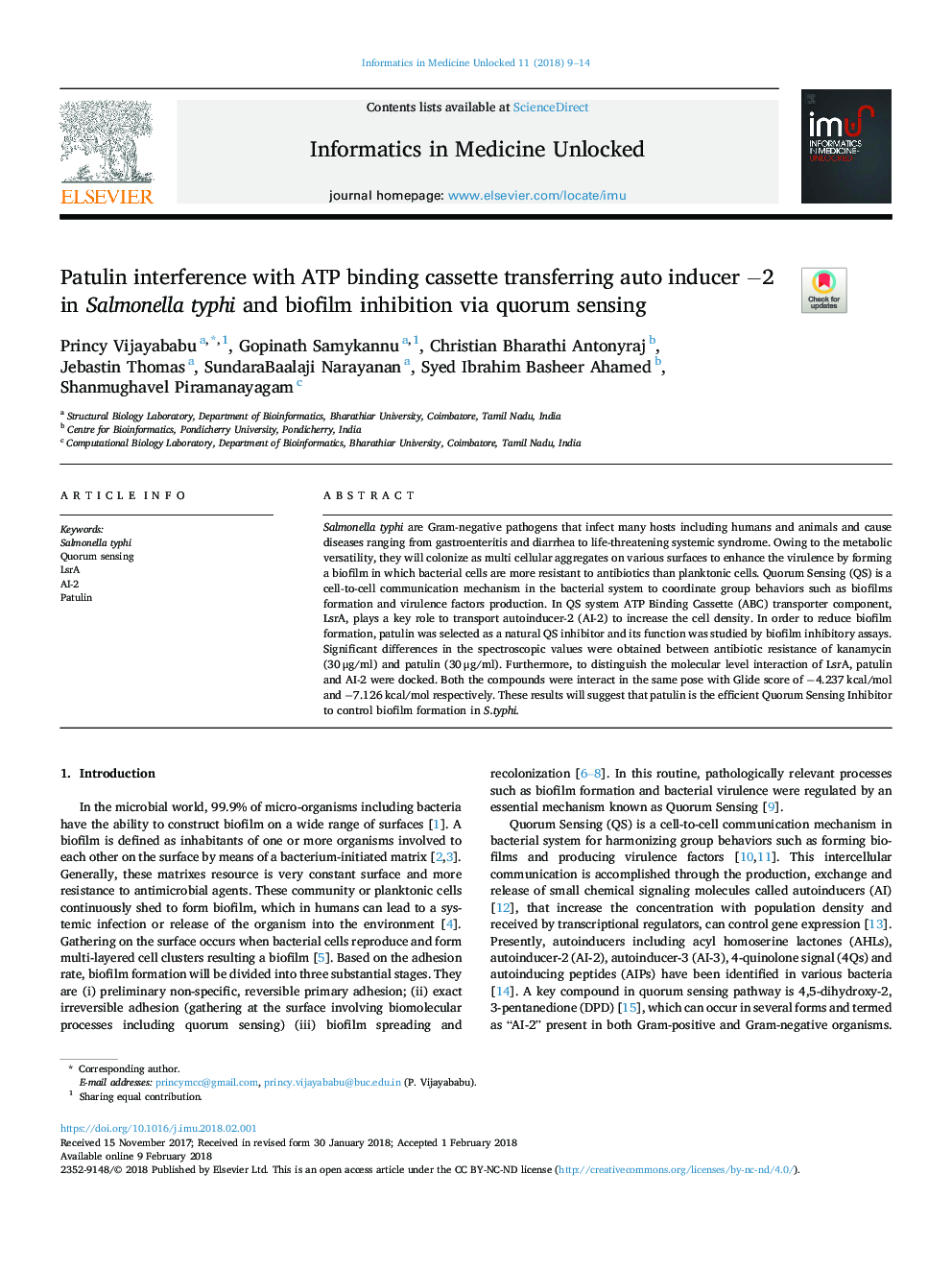| Article ID | Journal | Published Year | Pages | File Type |
|---|---|---|---|---|
| 6898905 | Informatics in Medicine Unlocked | 2018 | 6 Pages |
Abstract
Salmonella typhi are Gram-negative pathogens that infect many hosts including humans and animals and cause diseases ranging from gastroenteritis and diarrhea to life-threatening systemic syndrome. Owing to the metabolic versatility, they will colonize as multi cellular aggregates on various surfaces to enhance the virulence by forming a biofilm in which bacterial cells are more resistant to antibiotics than planktonic cells. Quorum Sensing (QS) is a cell-to-cell communication mechanism in the bacterial system to coordinate group behaviors such as biofilms formation and virulence factors production. In QS system ATP Binding Cassette (ABC) transporter component, LsrA, plays a key role to transport autoinducer-2 (AI-2) to increase the cell density. In order to reduce biofilm formation, patulin was selected as a natural QS inhibitor and its function was studied by biofilm inhibitory assays. Significant differences in the spectroscopic values were obtained between antibiotic resistance of kanamycin (30â¯Î¼g/ml) and patulin (30â¯Î¼g/ml). Furthermore, to distinguish the molecular level interaction of LsrA, patulin and AI-2 were docked. Both the compounds were interact in the same pose with Glide score of â4.237â¯kcal/mol and â7.126â¯kcal/mol respectively. These results will suggest that patulin is the efficient Quorum Sensing Inhibitor to control biofilm formation in S.typhi.
Related Topics
Physical Sciences and Engineering
Computer Science
Computer Science (General)
Authors
Princy Vijayababu, Gopinath Samykannu, Christian Bharathi Antonyraj, Jebastin Thomas, SundaraBaalaji Narayanan, Syed Ibrahim Basheer Ahamed, Shanmughavel Piramanayagam,
